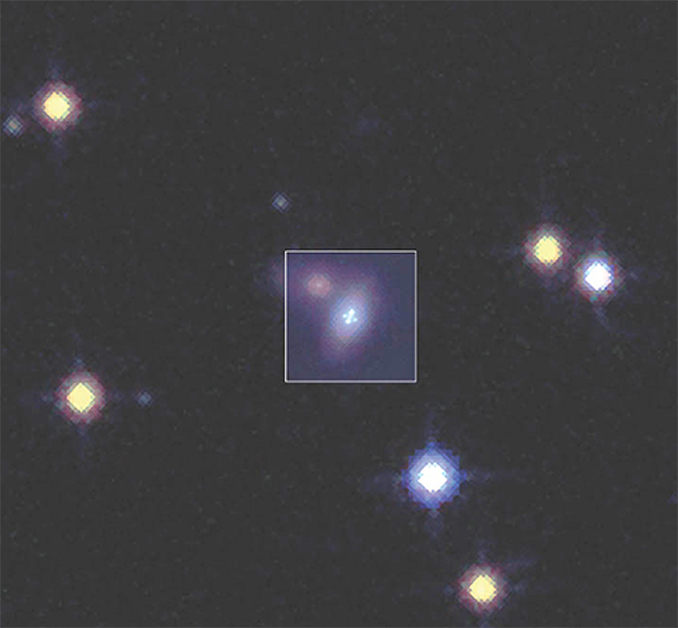
Astronomers have found a remarkable example of gravitational lensing with a Type 1a supernova magnified 25 times and split into multiple images as the light from the blast passed through a foreground galaxy on its way to Earth. It is the smallest resolved gravitational lens system ever detected by optical telescopes.
Known as SN Zwicky, the supernova was first detected by the Zwicky Transient Facility, operated by Caltech at Palomar Observatory, as part of the largest supernova survey to date.
“I was observing that night and was absolutely stunned when I saw the lensed image of SN Zwicky,” said Christoffer Fremling, a staff astronomer at the Caltech Optical Observatory who leads the ZTF supernova survey.
“We catch and classify thousands of transients with the Bright Transient Survey, and that gives us a unique ability to find very rare phenomena such as SN Zwicky.”

Said Ariel Goobar, lead author of a study published in Nature Astronomy and director of the Oskar Klein Center at the University of Stockholm: “We noticed that SN Zwicky was brighter than it should have been given its distance to us and quickly realised that we were seeing a very rare phenomenon called strong gravitational lensing.”
“Such lensed objects can help us to uniquely probe the amount and distribution of matter in the inner core of galaxies.”
Predicted in the equations of relativity theory, gravitational lensing can occur when the light of a background object passes through or near a closer body on its way to an observer. The gravity of the foreground object acts as a lens, warping and magnifying the light, allowing astronomers to see details that otherwise would escape detection.
It typically takes an intervening galaxy, or a cluster of galaxies, to produce magnified images of much more distant galaxies in the remote background. While lensed images of brilliant quasars are well known, only a handful of multi-image supernovas have been found.
SN Zwicky was quickly flagged as an object of interest after its initial detection. Subsequent observations by the W.M. Kick Observatory, the Very Large Telescope and the Hubble Space Telescope confirmed gravitational lensing was responsible for the object’s observed brightness.
SN Zwicky is especially interesting because it is a Type 1a supernova. Such supernovas occur when a white dwarf in a binary system pulls in enough mass from a companion that it gravitationally implodes and explodes with a characteristic brightness.
That brightness can be used to calculate the distance to an object, and Type 1a supernovas were critical to the discovery of dark energy.
“Strongly lensed Type Ia supernovae allow us to see further back in time because they are magnified. Observing more of them will give us an unprecedented chance to explore the nature of dark energy,” says Joel Johansson, a postdoctoral fellow at Stockholm University and a co-author on the study.



